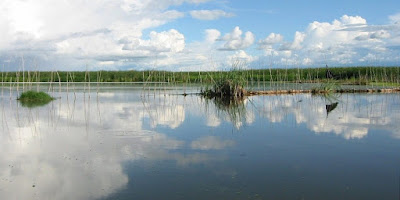Many mountains in Malawi are closely associated with the spirit world and when mentioned or talked about with others stir up feelings of fear and curiosity among many Malawians. Many locals are really superstitious and their beliefs are quite strong. It is at these mountains where shrines in the past were erected. Some shrines were dedicated to ancestors such as past chiefs who were the guardians of the mountains, other were shrine dedicated to other things, things such as rain. At Kungoni cultural centre in Dedza, there are wall paintings depicting rituals praying for rain.
And to the Chewa people the spirit of rain was an
entity or being that manifested itself as a colossal snake. The python in Chewa is
closely identified mythologically with water, rivers and deep pools, and thus
with rainfall. And this is depicted in a lot of Chewa art, stories and writing.
The enormous snake is named Napolo. And when mentioned, quite a lot of people will remember the stories behind it, but the newer generations will probably not know. Napolo was portrayed as a spirit, as a vicious wild animal or as a snake and these terms are used interchangeably. Napolo tends to be seen as a huge subterranean serpent-spirit, associated with water. It was said to dwell in the mountain in a deep sacred pool, at the place of spirits.
It
is invisible, but it has the form of a huge snake, and it is active like a wild
animal destroying people and property as it makes its way, at intervals, to the
lake and with it comes rain. It was depicted as having left the deep sacred
pools within the mountain and as having moved to Lake Chilwa, coming down as or
with water. Napolo was further described as having torn up trees and having
separated or detached the earth or soil from the mountain causing landslides. Like
other spirits it is said it cannot be seen but if one does see them, the person
would surely die.
There were cases in which Napolo was said to have
moved from one area to another causing widespread death and destruction as it
snaked its way to its destination.
In Zomba, in 1946 there was extensive devastation
when several bridges were washed away and many villages were destroyed by a
huge deluge of water that came down the mountain after torrential rain on the
plateau. It was said Napolo had moved from the depths of the mountain to the swampy Lake Chilwa.
And in Phalombe, around Mulanje mountain, in 1991 Napolo was said to have move again. After torrential rain in southern Malawi the people in the neighbouring villages felt like the whole mountain was coming down on them. There was a flash flood and land slide. Boulders cascaded and trees tumbled down with the muddy deluge that completely swept away all the bridges on the Phalombe-Mulanje road and annihilated the region of Phalombe killing hundreds of people.
And in Phalombe, around Mulanje mountain, in 1991 Napolo was said to have move again. After torrential rain in southern Malawi the people in the neighbouring villages felt like the whole mountain was coming down on them. There was a flash flood and land slide. Boulders cascaded and trees tumbled down with the muddy deluge that completely swept away all the bridges on the Phalombe-Mulanje road and annihilated the region of Phalombe killing hundreds of people.
Since then there have been yearly seasonal flooding
in the lower shire valley, but no floods of immense proportion around these
mountain areas. Has Napolo found a permanent resting place in the sacred pools?
Or is it a matter of time till it wakes and wrecks havoc once again?







No comments:
Post a Comment